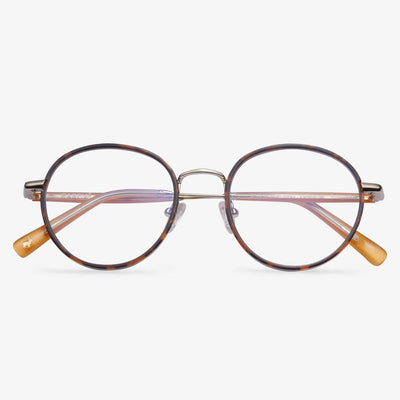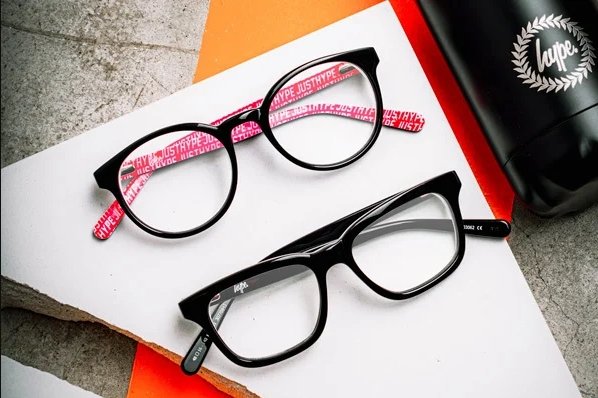Advantages Of TR90 Frames
- Lightweight. The weight is about half the weight of the plate frame, which can reduce the burden on the bridge of the nose and ears, and it is also comfortable to wear for a long time.
- Bright colors. Compared with ordinary plastic frames, the color of TR90 frames is even better.
- Impact resistance. The TR90 frame is extremely flexible, and its good elasticity can effectively prevent damage to the eyes caused by impact during sports.
Regardless of whether it is a sheet frame or a TR90 frame, they have their own advantages. You can choose them according to your requirements, Importantly, it is comfortable to wear and good-looking.
Are Horn Rimmed Glasses Suitable for You?
Since the horn rimmed glasses are fashionable, some of you may ask whether horn rimmed glasses or horn rimmed sunglasses are suitable for you. It may depend on several factors such as style, preference, profession and responsibility. Horn rimmed glasses can bring a sense of fashion sense for you.
In addition, horn rimmed glasses will never go out of style. If you like them, have a try.
How to buy prescription glasses online
Consumers should choose different styles of frames according to their age and professional characteristics. Because everyone has different face shapes, different interpupillary distances, and different diopters, the size of the frames should vary from person to person.
Lenses are divided into glass lens, resin lens, and PC lens, and you can choose according to your preferences. The glass lens has a stable refractive index, good abrasion resistance, and stable optical performance, but it is relatively heavy and easy to break. Resin lens with high light transmittance is light, safe, and not easy to break, but the surface is easy to wear. PC lens has a high refractive index, but the surface is easy to wear.
Types of Single Vision Lenses
Single vision lenses come in several different types including the 1.59 polycarbonate single vision, 1.57 mid-index single vision and polarized single vision.
1.59 polycarbonate single vision lenses are characterized by their durability and impact resistance. They often include an anti-scratch coating or anti-reflective coating. This lens is much lighter and thinner than a traditional plastic lens, and it blocks the sun’s harmful UV, offering maximum UV protection.
1.57 mid-index single vision lenses are thinner than regular plastic and moderately lighter and stronger. They come with an anti-scratch coating or anti-reflective coating. These lenses are an ideal option for people with relatively higher prescriptions. But they are thicker than the polycarbonate lenses.
Polarized single vision lenses are sunglasses that protect your eyes from light that bounces off smooth, highly reflective surfaces like asphalt, snow, and water. These lenses work by controlling certain light properties and limiting specific wavelengths. They boast a vertical filter that does not allow horizontal glare to pass through.
What Should You Do If Your Glasses Are Broken?
Adjust the frame by yourself. If your frame is tilted, place your glasses on a flat surface to determine which arm is higher than the other. If the right arm looks raised, you'll need to use pliers to bend the left arm down at the hinge. Or, if the left arm is raised, bend the right arm at the hinge. You can bend your metal-framed arms inward. You can turn the nose pad inward if the glasses slip under your nose. To make the frames more flexible, you can heat them with a hairdryer. If the metal frame has broken into pieces, you may need to take it to a professional. However, if your metal frames just bend, you may be able to repair them by yourself.
Why do blue light glasses turn yellow?
The glasses are used for a long time. Blue lenses are usually light yellow. If the yellow is too deep, the resin lenses will oxidize and become yellow due to the long-wearing time. The lenses need to be replaced in time. Yellowing of the lens is related to the excessive secretion of facial grease, which leads to yellowing of the lens. The most direct way is to replace the lens glass.
What Is Polycarbonate Lens?
Polycarbonate was invented in the 1970s for aerospace applications and is currently used for the helmet visors of astronauts and for space shuttle windshields.
Polycarbonate lenses were introduced in the early 1980s in response to a demand for lightweight, impact-resistance lenses. Since then, polycarbonate glasses have become standard for safety glasses, sports goggles, and children’s eyewear.
Polycarbonate glasses come with a lot of features such as thin and light and they provide 100% percent UV protection and are up to 10 times more impact-resistance than plastic pr glasses lenses.











































